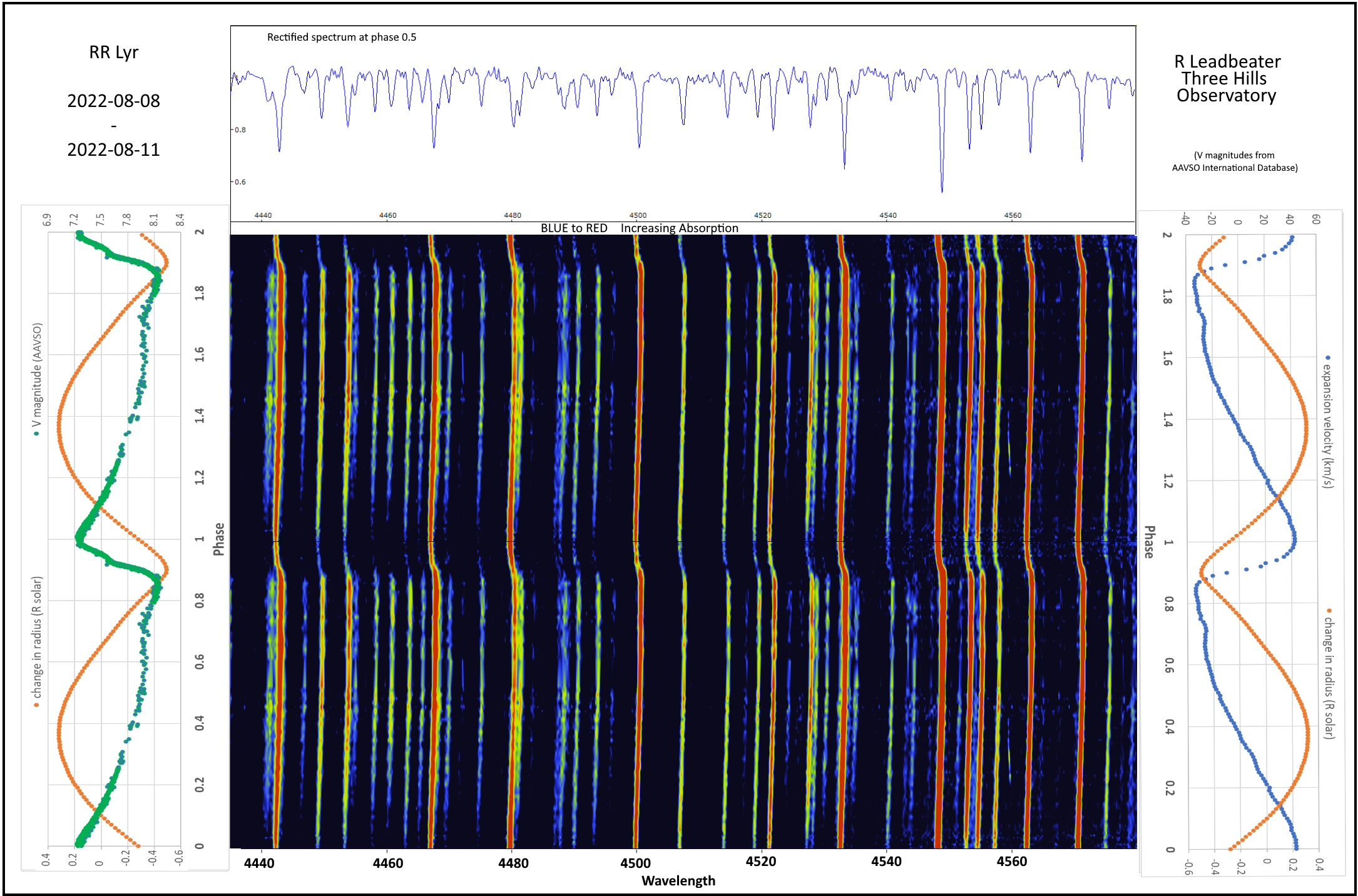Download or open graphic in separate tab to view full size
The techniques developed during these observations were used in the modelling of pulsating delta Cepheid variables
https://www.youtube.com/watch?v=Z865ow5BuTY&ab_channel=britishastronomical
(BAAVSS presentation)
https://arxiv.org/abs/2409.10116
The graphic is based on 83 spectra covering 4430 - 4580Å at 0.7Å resolution recorded over 4 consecutive nights and folded into a common (13.6 hour) period to cover the full pulsation cycle. The 2D colour plot shows the variations in the spectrum (interpolated from the original data at intervals of 0.002 phase) over 2 repeat cycles. The colours represent the depth of the absorption lines, increasing from blue to red. A typical individual rectified spectrum (at phase 0.5) is shown at the top.
Similarly folded V magnitude data from the AAVSO international database is plotted in green to the left. Zero phase corresponds to maximum V magnitude. (RR Lyrae exhibits some variation in phase and brightness range at times due to the poorly understood Blazhko effect. This was not obvious here however, the folded data fitting well to a common curve.)
Changes in Radial Velocity (Seen in the 2D plot as small shifts in the wavelength of the lines) were measured from the individual spectra using a cross correlation technique. These measurements were then translated to star-centric coordinates and a projection factor (1.35) applied to correct for the fact that the true change in surface velocity of the star along our line of sight is only seen at the centre of the stellar disc, the component of this reducing towards the limb. These star-centric velocities (interpolated at 0.01 phase intervals) are plotted on the right in blue. The range is from -33km/s when the star is contracting to +43km/s when the star is expanding. The small bump at ~0.75 phase is considered real and corresponds to a similar bump in V magnitude.
This star-centric radial velocity can be integrated over time to give a measure of the change in radius of the star through the pulsation cycle. This is plotted in orange on both sides of the graphic. The radius of the star changes by ~0.8 solar radii or ~15 % , assuming a mean radius of 5.2 solar
Note that many graphics found on the internet incorrectly show the maximum and minimum brightness corresponding to maximum and minimum size of the star. In practise however the brightness is almost identical at maximum and minimum radius and is in fact mainly dependent on the temperature. The varying temperature can be seen qualitatively in the 2D colour plot as a change in the intensity of many of the lines, which weaken sharply at phase ~0.9 as the temperature increases rapidly and recover gradually to around phase ~1.3 as the temperature drops.


